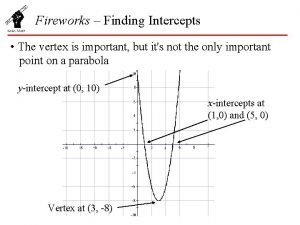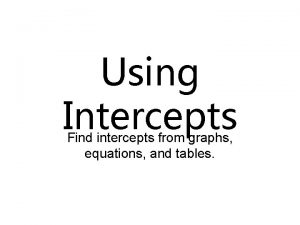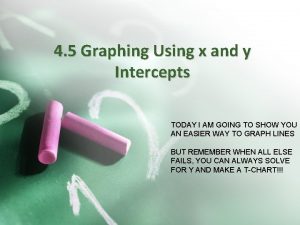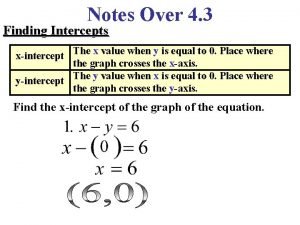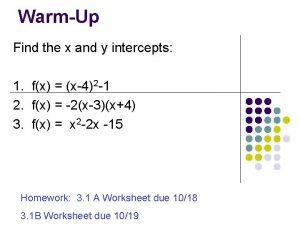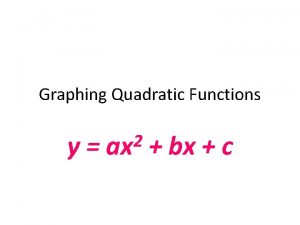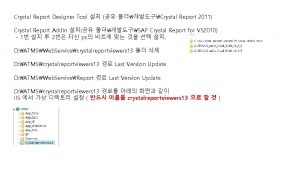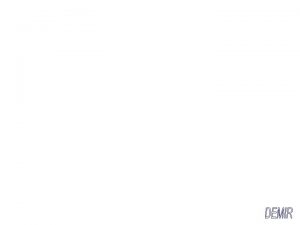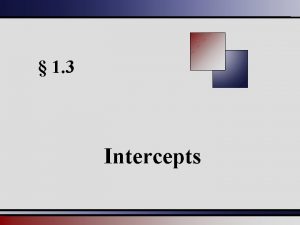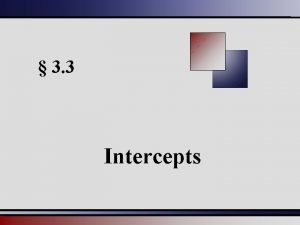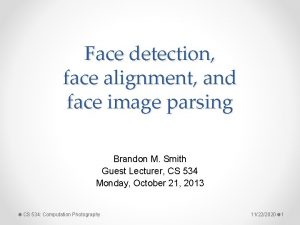Intercepts o Intercepts measure where a crystal face









- Slides: 9

Intercepts o Intercepts measure where a crystal face hits a crystal axis. The location on the axes corresponding to unit lengths is arbitrary and chosen for simplicity and convenience Axes usually radiate from the center in a right hand rule arrangement Axes pass through centers or edges

Intercepts are relative sizes “The intercepts of a face have no relation to its size, for a face may be moved parallel to itself for any distance without changing the relative values of its intersections with the crystallographic axes. ” K&D p. 133

Miller Indices from Intercepts o “The Miller Indices of a face consist of a series of whole numbers that have been derived from the intercepts by o inverting, and if necessary o by the clearing of fractions. ” o “The Miller Indices [also] express a ratio …. ” K&D p 133

Problem: find the Miller Index for a face with intercepts 2 a, 2 b, 2/3 c 1. Invert the indices: 2. ½½ 3/2 3. 2. This is a ratio. If we multiply all terms by a constant, the ratio remains the same. 4. Let’s multiply by 2 to clear the fractions: 5. 6. (1 1 3)

Miller Indices for horizontal and vertical faces A face perpendicular to one axis may be considered to intersect the others at infinity. For example, for a face perpendicular to the c-axis (aka a 3 -axis) the [positive side] index would be (001).

The colored face is parallel to a 1 and a 2, meeting them only at ∞ Problem: find the Miller Index for this face with intercepts ∞ a 1, ∞a 2, 1 a 3 1. Invert the indices: 2. Since 1/∞ = 0 and 1/1 = 1 3. we have 0/1 1/1 4. 2. Clear fractions by multiplying 5. through by 1 6. (0 0 1)

Miller Indices for faces parallel to two axes A face parallel to two axes may be considered to intersect the other at unity. For example, for a face parallel to the a-axis and c -axis (or a 1 and a 3) the [positive side] index would be (010).

Miller Indices for faces parallel to one axis If a face is parallel to one of the crystallographic axes, a zero “ 0” is used (because 1/infinity = 0) For example, for a face parallel to the a-axis, the [positive side] Miller Index could be (011)

Faces that intersect axes on their negative side. o “For faces that intersect negative ends of crystallographic axes, a bar is placed over the appropriate number…. The bar represents the minus sign in a negative number


